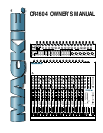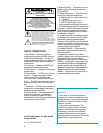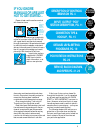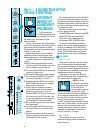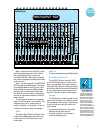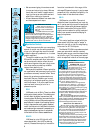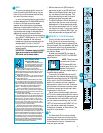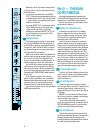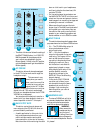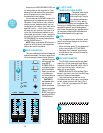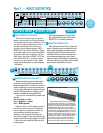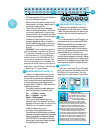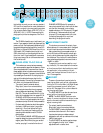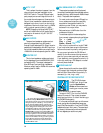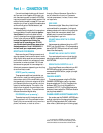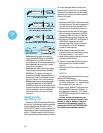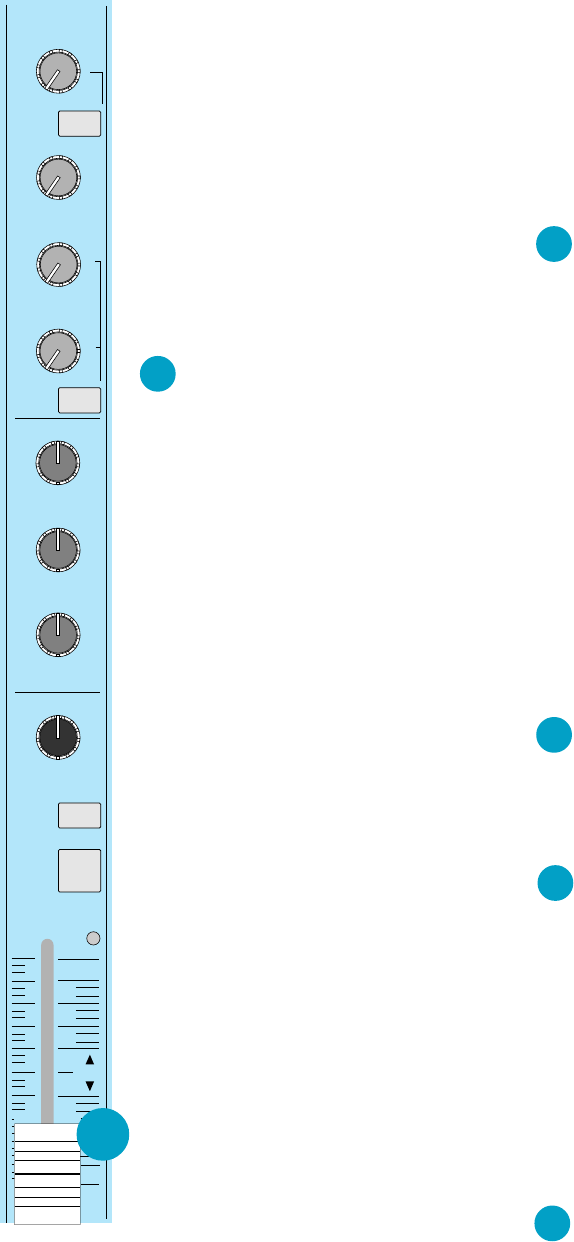
8
Part 2 — THE MAIN
OUTPUT SECTION
Now that you have become more familiar
with the CR-1604’s channel strips, let’s move our
guided tour on to the Master control center.
We will start at the top of the section with
the Stereo Aux Returns.
STEREO AUX RETURNS LEVEL
Located at the upper left of the Master
Section, these four controls set the overall
level for signals received via the four stereo
Aux Returns from whatever effects you’ve
connected from the Aux Sends.
As with the sends, these controls are de-
signed to handle a very wide range of signal
levels (which is a good thing considering the
wildly varying output levels of many outboard
signal processors). Remember how the gain
was divided on the Aux Send controls? The
same approach is used on these controls. The
first half of the knob’s rotation operates from
off to Unity Gain (0dB) center position. The
second half of the rotation provides gain from
0dB up to 20dB gain which can be very useful
for bringing the level of some low output ef-
fects up to professional operating levels.
AUX RETURN BALANCE
The four Aux Return Balance controls are
used to control the left/right balance of each
return’s signal (just like on your stereo)
within the main mix.
AUX RETURN MONO
These four buttons are used to combine
left and right Stereo Aux Return signals into a
monaural signal, which is then sent on in
equal proportions to the left and right Master
Mix Buses.
NOTE: If all four Stereo Aux Returns are
set to mono, a total of 8 separate mono feeds
can be routed to the main mix.
If you are connecting an effects device
which only has a mono out, pressing the AUX
RETURN MONO button will route the effect
to both the Left and Right main buses.
AUX RETURN SOLO
This button is used to solo the four Aux Re-
turns for more detailed scrutiny. This function is
the same as that of the Solo control on the
individual channel strips, except that it solos all
four AUX returns at the same time.
Basically, the OL lights should never blink.
If they do, you’re courting the potential of au-
dible distortion.
• If you adjust the channel’s input SENSI-
TIVITY too high and compensate by pulling
the faders down, the OL light will still flash
— even though you’re seeing conservative
levels on the meters.
• If you set SENSITIVITY properly but add a
LOT of EQ while mixing, you might also
trigger the OL indicator. In this case,
lowering the channel’s SENSITIVITY trim
pot will keep from over driving the EQ,
which may be clipping.
CHANNEL FADER
Controls the overall output of the channel.
All of the AUX SENDS with the exception of
AUX 1/MON in Monitor mode are affected by
this control (AUX 1/MON in Monitor mode is
not affected because it is placed upstream of
the Fader and EQ, remember?)
Most mixer channel faders are labeled with
arbitrary and confusing ranges of digits (such
as 1 thru 10) that don’t correspond to any-
thing. This often leads to mis-adjustment, as
well as distortion, noise or all of the above.
On the CR-1604, proper gain settings are
facilitated by the click-detent Unity Setting
half way up the slider. When the channel’s in-
put control has been adjusted properly, Unity
represents NO LOSS OR GAIN when panned
left or right.
This means you have a known setting
which is easily repeatable, even in the dark.
Because levels can be set properly from this
reference point, you can achieve very high
headroom and low noise at the same time.
And, unlike any other mixer, you have 20dB
MORE gain above Unity.
8
9
10
AUX
U
1
2
3
4
5
6
U
U
U
+1500
+1500
+1500
+1500
5/6
SHIFT
+15–15
0
HI
+15–15
0
MID
+12–12
0
LO
EQ
0
RL
PAN
SOLO
MUTE
ALT 3/4
OL
+20
U
00
1
MON
7
11
7



